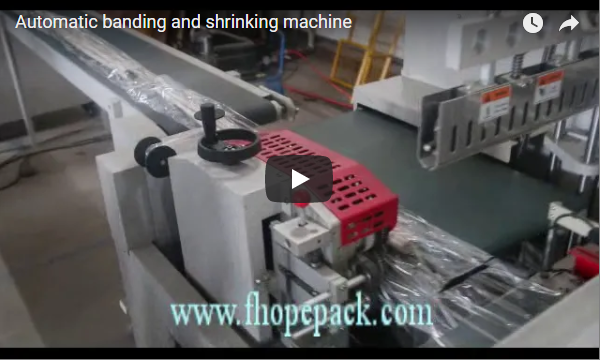Streamlining Steel Wire Handling: A Deep Dive into Automatic Coiling and Strapping Technology
Steel wire serves as a fundamental component across a multitude of critical industries, including construction, manufacturing, automotive, and beyond. Efficiently managing this essential material, particularly during storage and transportation, necessitates proper coiling and strapping. However, traditional manual methods for these tasks present significant operational challenges.
1. Overcoming Manual Steel Wire Processing Hurdles
Manual coiling and strapping of steel wire is often characterized by:
- Labor Intensity: Requiring significant manpower, contributing to high operational costs.
- Time Consumption: Slowing down production cycles, especially when dealing with varying wire diameters and lengths.
- Inconsistency: Leading to variations in coil density, shape, and strapping security, impacting storage and handling.
- Safety Risks: Manual handling of heavy wire coils poses ergonomic risks and potential for injury.
These factors underscore the need for more advanced, automated solutions in modern industrial environments.
2. Introducing the Automatic Steel Wire Coiler: A High-Tech Packaging Solution
The Automatic Steel Wire Coiler represents a significant advancement in steel wire packaging technology. This sophisticated machine automates the entire process of winding steel wire into neat coils and securely strapping them, dramatically improving efficiency and consistency. It's designed to handle the demands of high-volume production environments, transforming a traditionally labor-intensive task into a streamlined, automated operation.
3. Technical Deep Dive: Core Specifications and Capabilities
Understanding the technical capabilities is key to appreciating the value of this automated system. Typical specifications often include:
- Coil Outer Diameter (OD) Range: Capable of producing coils within a specific range, commonly cited as 400-700mm, catering to various downstream requirements.
- Wire Diameter Compatibility: Designed to handle a range of steel wire gauges, ensuring versatility. (Specific range depends on the model).
- Adjustable Winding Speed: Allows operators to optimize the coiling speed based on the specific characteristics of the wire (e.g., diameter, tensile strength) and production needs.
- Precision Tension Control: Incorporates systems to maintain consistent tension during winding, crucial for producing dense, stable, and uniformly shaped coils.
- Automated Strapping: Integrates a strapping unit (often using PET or steel straps) to secure the coil automatically upon completion of the winding cycle. The number and position of straps can typically be programmed.
- Control System: Usually features a PLC (Programmable Logic Controller) with an HMI (Human-Machine Interface) for ease of operation, parameter adjustment, and diagnostics.
- Coil Compaction (Optional): Some models include mechanisms to compact the coil before strapping, further increasing density and stability.
4. Operational Advantages and Return on Investment (ROI)
Implementing an automatic steel wire coiler delivers tangible benefits for producers and distributors:
- Enhanced Efficiency & Throughput: Significantly accelerates the coiling and strapping process compared to manual methods, boosting overall production output.
- Improved Coil Quality & Consistency: Automated tension control and precise winding result in uniform, tightly wound coils every time, reducing material handling issues.
- Significant Labor Cost Reduction: Frees up manual labor for other value-added tasks, directly impacting operational expenses.
- Enhanced Workplace Safety: Minimizes manual handling of heavy wire and repetitive motions, reducing the risk of injuries.
- Optimized Logistics: Produces neat, compact, and securely strapped coils that are easier and safer to stack, store, and transport.
- Reduced Material Waste: Consistent strapping minimizes coil damage during handling.
5. Real-World Application and Selection Considerations
These machines are invaluable in facilities producing or processing large volumes of steel wire, such as wire drawing plants, galvanizing lines, and distribution centers. When considering adoption, factors include:
- Production Volume: The required throughput dictates the necessary machine speed and robustness.
- Wire Specifications: Ensure the machine can handle the specific range of wire diameters and types (e.g., low/high carbon, galvanized, annealed).
- Coil Size Requirements: Match the machine's OD/ID and width capabilities to your needs.
- Integration: Consider how the coiler will integrate with upstream payoffs and downstream handling systems (e.g., conveyors, robotic palletizers).
- Space and Budget: Evaluate the machine footprint and the overall investment against the projected ROI.
6. The Strategic Advantage of Automation in Wire Handling
An automatic steel wire coiler designed for effective wire winding and strapping is more than just equipment; it's a strategic investment in advanced and reliable steel wire packaging. By optimizing resource allocation (time, labor, energy) and enhancing the safety and convenience of steel wire handling, these systems empower producers and distributors.
7. Conclusion: Enhancing Competitiveness through Automation
In today's competitive industrial landscape, efficiency, quality, and safety are paramount. The automatic steel wire coiler addresses the core challenges of manual wire processing, offering a robust solution that delivers consistent results, reduces costs, and improves overall operational performance. Adopting such automation is a key step for steel wire producers and distributors aiming to enhance their competitiveness and profitability in the market.






